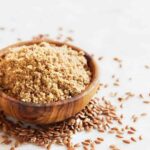Intentional Tooth Replantation, Apicoectomy, and Root Canal (Part 3 of 7)
Thanks to GSG reader Sheryl, whose husband is a dentist, for suggesting I research Intentional Replantation. It has been practiced for 1,000 years, and it is not difficult for dentists, although very few do it or even think to do it. It involves treating the tooth outside the mouth and re-implanting it, and the dental research literature indicates 70-91% success rates five years later.
This may be a way to keep your tooth—and they clearly aren’t always “dead” if they can re-implant and grow ligament and tissue a vast majority of the time. I think the default position for most dentists and endodontists is to go straight to a root canal. It’s what they know, what they’ve been taught.
Sheryl (whose husband is a D.M.D.) had an Intentional Replantation recently by Dr. Kurt Brimley of Copper Creek Endodontics, after a failed root canal. The tooth is extracted, the diseased part on the roots is removed, and the tooth must be replanted in the socket within five minutes! The replantation was successful and the infection subsided. You can google the term and see what the diseased pulp looks like when a tooth is pulled, right before that diseased part is cut off and the tooth is reimplanted.
I imagine a replanted tooth has the same risks. I would imagine it removes infected pulp but also creates another problem. All the theory I have been studying is that the beginning of a systemic infectious problem occurs when the inviolate, naturally sterile environment of the vast network of channels under the tooth is violated, exposed.
Ditto, then, for the endodontic procedure of the apicoectomy, where an incision Is made in the lower gum tissue to expose the bone covering the tip of the tooth root. A hole is then made in the bone, infected bone scraped out, and amalgam filling replacing it. Now mercury is implanted inside the body, in contact with the jawbone and its blood supply. Authors Drs. Kulacz and Levy say in addition to the glaring problem of the world’s most toxic heavy metal now offgassing in blood and bone, the procedure also leaves a tooth still infected since the procedures cannot sterilize the infected area, so bacteria should be expected to continue to grow, and their toxic products circulate to other parts of the body, just as with a root canal.
The sources I have read said that taking Vitamin C, silver, or any number of other good safe and effective anti-microbials (not antibiotics, which are not safe) will do no good in these dental situation, because they will not ever get to the approximately 3 miles of dentin tubules below each tooth.
And, Dr. Weston Price’s research showed that it is extremely difficult to sterilize root-canal-treated teeth even after they have been extracted! Dr. Walls’ office recommends I extract my two back molars that have been root-canal treated.
Several researchers have found that trapped, anaerobic bacteria in the focal area of the tooth escape that area and migrate to other parts of the body. A diseased, mummified tooth (i.e. root canal) can cause a different disease in you than it causes in me, which is part of why this practice has gone on so long, without obvious links.
But Drs. W. D. Miller, William Hunter, Weston Price, and Edward Rosenow studied and documented very well the principle of focal infection traveling to become systemic disease. Various organisms that morph in the body have specific affinities for specific parts of the body, or they may migrate to weaknesses you have.
This research makes me that much more motivated to eat a consistently alkaline, low-sugar diet. To avoid as many dental dilemmas as possible.
Dentists are good, skilled, ethical people, by and large, of course—but perhaps when all you’ve got is a hammer, sometimes everything looks like a nail? Two dentists’ wives told me as I was researching, that their husbands had to leave other practices to start their own, because they were “undertreating.” In other words, some dental practices push the most invasive, most expensive procedures.
I am disturbed that I had two root canals before knowing all this. The more recent one, I just had some mild tooth sensitivity. I was leaving for Africa and afraid I would get there and have the horrible, mind-numbing, no-sleep-possible pain that I had with the first root canal many years ago. So I let the dentist refer me to an endodontist for the procedure. Should this ever happen again, now I know of options in holistic or biological dentistry.
In fact, I plan to have Dr. Walls remove the tooth for six months and then do one of the options mentioned above. I may have him ozonate root canals multiple times, given Dr. Price’s caveat that once you’ve had a root canal, even with the tooth extracted, it’s terribly difficult to sterilize 3 miles of tubules.
Tomorrow I am going to share some of the other comments of dentists who replied to me on the topics of root canals, fluoride, and metal fillings.
Posted in: Dental Health













